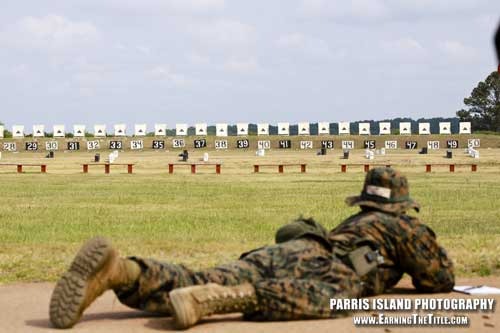The #morebulletspeez campaign proposes an amendment to the Fiscal Year 2027 Department of War Appropriations Act, mandating a minimum of 3,120 rounds of annual rifle marksmanship training for every United States Marine to uphold the "every Marine a rifleman" principle. With approximately 168,300 active-duty Marines, this increased training requirement necessitates a closer look at the logistical implications, particularly the capacity and expansion of firing ranges across Marine Corps bases. Below, we explore the current infrastructure, required lane numbers, and potential solutions to ensure feasibility.
Current Range Infrastructure
The U.S. Marine Corps operates over 200 firing ranges across its major installations worldwide, including bases like Camp Pendleton, Camp Lejeune, and Twentynine Palms. These facilities collectively provide an estimated 1,500–2,000 lanes for small arms training, based on data from installations such as:
MCB Camp Pendleton (CA): ~20 ranges, with 500+ lanes.
MCB Camp Lejeune (NC): ~16 live-fire ranges, with 150–250 lanes.
MCAGCC Twentynine Palms (CA): ~10 ranges, with 200–300 lanes.
MCB Quantico (VA): ~55 ranges, with hundreds of lanes.
Overseas bases (e.g., Okinawa): 5–10 ranges, with 100–200 lanes.
This capacity currently supports annual qualifications but is insufficient for weekly sustainment training at the proposed scale.
Lane Capacity and Weekly Cycling
To meet the 3,120 rounds per Marine annually, a weekly rotation is ideal, requiring each Marine to shoot approximately 60 rounds per week. Based on operational logistics:
Daily Capacity: Assuming 40 minutes per shooter (30 minutes shooting + 10 minutes cleanup/target change), a single lane can host 18 shooters per day over 12 hours (720 minutes ÷ 40 = 18). Over 8 hours (480 minutes), this drops to 12 shooters per day (480 ÷ 40 = 12).
Weekly Capacity: For 12-hour days, 18 × 7 = 126 shooters per lane per week. For 8-hour days, 12 × 7 = 84 shooters per lane per week.
Total Lanes Needed: For 168,300 Marines:
12-hour days: 168,300 ÷ 126 ≈ 1,336 base lanes + 20% for downtime/repairs = ~1,603 total lanes.
8-hour days: 168,300 ÷ 84 ≈ 2,004 base lanes + 20% = ~2,405 total lanes.
Base-Specific Estimates (12-hour basis, +20% for downtime/infantry needs):
MCB Camp Pendleton (~40,000 Marines): ~381 lanes.
MCB Camp Lejeune (~38,000 Marines): ~362 lanes.
MCAGCC Twentynine Palms (~12,000 Marines): ~114 lanes.
MCB Quantico (~7,000 Marines): ~67 lanes.
MCRD Parris Island (~5,000 Marines): ~48 lanes.
MCRD San Diego (~4,000 Marines): ~38 lanes.
MCB Hawaii (~7,000 Marines): ~67 lanes.
MCB Okinawa (~18,000 Marines): ~172 lanes.
Addressing the Gap
With current infrastructure at 1,500–2,000 lanes, the 12-hour scenario requires minimal expansion (100–300 lanes), while the 8-hour scenario demands ~400–900 additional lanes. Bases like Pendleton and Lejeune, with existing surpluses (500+ and 150–250 lanes respectively), can reallocate resources, while undersupplied sites (e.g., Okinawa) need targeted upgrades. Construction costs range from $200,000–$500,000 per lane, suggesting a one-time investment of $20–$150 million for new ranges, potentially covered within the proposed $75 million OMMC allocation.
Solutions and Advocacy
The amendment can integrate these needs through:
Base Assessments: Require a DoD audit within 90 days to map current vs. required lanes, optimizing existing facilities.
Phased Expansion: Prioritize modular ranges at high-demand bases, using simulators (20–30% capacity offset) to reduce live-fire pressure.
Flexible Scheduling: Allow monthly/quarterly blocks to ease daily loads.
Support this logistical enhancement by signing our petition at https://c.org/N95f75PR4R and urging your representatives on the Defense Appropriations Subcommittee to include funding for range infrastructure. Visit morebulletspeez.com for more details and join with #morebulletspeez!

